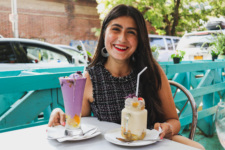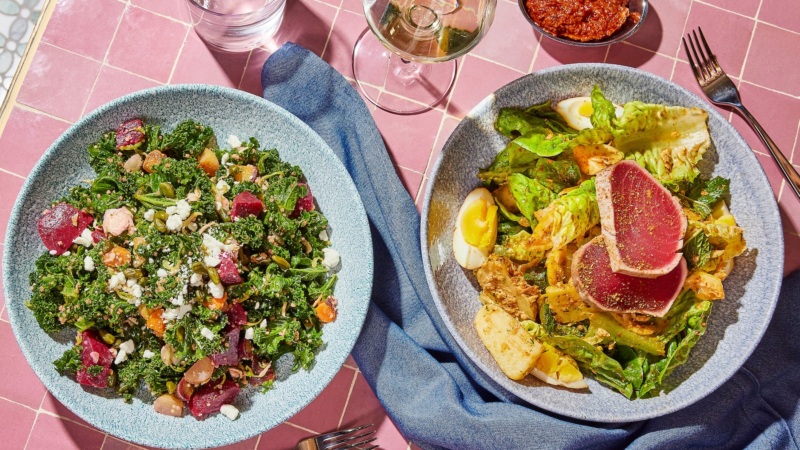

New York Has Incredible Mexican Food. Here’s Where to Find It.
 “Sweet baby Quetzalcoatl, this would last people a week.”
“Sweet baby Quetzalcoatl, this would last people a week.”
It’s a hot, sticky August day in Corona, Queens, and a taco professor, a Puebla chef, and a Queens food expert are peering inside the Tortas Neza food truck, scrutinizing owner Galdino Molinero’s every move.
We’re at the first stop on English professor Steven Alvarez’s ultimate Mexican food crawl along Roosevelt Avenue in Corona and Jackson Heights, Queens, and Molinero is assembling his signature Pumas torta, a gargantuan feat of a sandwich that weighs nearly two pounds by itself.



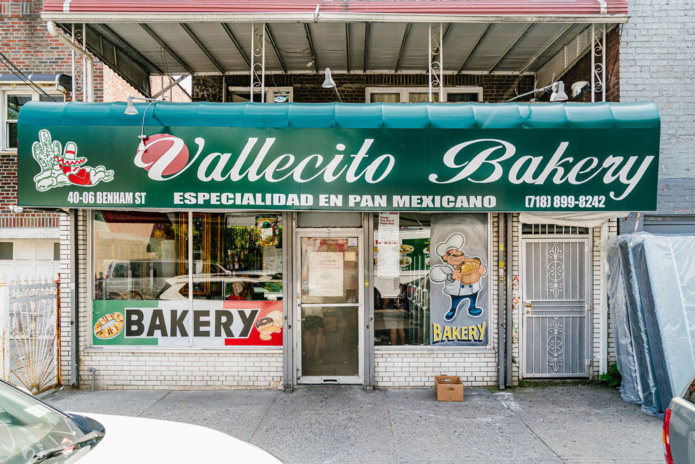




Alvarez is an associate professor at St. John’s University in Queens where he teaches Taco Literacy, a class that explores Mexican foodways as a means to understand Mexico’s culture, history, and its people. It all started when Alvarez was teaching in Lexington, Ky., and trying to get his primarily white student body to interact with the neighboring off-campus Mexican community.
He quickly realized that food was the uniter.
“In this country, folks don’t really like Mexican people but they love our food,” Alvarez explains. “And the argument of the class is: You can’t love the food unless you love us, too.”
Alvarez’s guest lecturers include Queens restaurant owners, and the homework involves visiting a few of their establishments, which we’re about to hit ourselves.
Joining Alvarez on this self-dubbed “taco tour” are his friends Irwin Sánchez, a chef at Puebla sensation Under the Volcano in Manhattan, and Joe DiStefano, Queens’ resident food expert.
As we meet up in Corona and dive into Jackson Heights, it’s heartening to see that what was once the epicenter of the pandemic back in early 2020 is now a neighborhood in rebirth: Every piece of sidewalk becoming precious real estate for a multitude of street vendors selling nieves, birria tacos, and flowers on the fly, to the tune of the 7 train rumbling high above.


Alvarez is a decade-long Jackson Heights resident himself and a Mexican American who wears his heritage proudly, and literally — showing up in a T-shirt featuring the queen of Tejano music. “Selena, represent!” he booms whenever someone comments on his attire.
He’s also infinitely passionate about the cultural fabric of his chosen home turf (he was born in a small town of 9,000 people in Arizona), in which not only Mexican immigrants, but people from all over Latin America brush shoulders with residents from India, Nepal, Bangladesh, Pakistan, and their own enclaves.
But what makes this rather large chunk of Queens especially dear to him is the sense of community and Mexican pride that’s been embedded since immigrants from Oaxaca, Guerrero, the indigenous region of Mixtec, and mostly Puebla started flocking to New York in the mid-90’s.
“You don’t have to be ashamed to speak Spanish here. A lot of other places, you do,” Alvarez says. “Even in this time, it’s still hard to be Mexican. But we’re always going to be proud of our food; it’s one of the strongest parts of our community here in New York City. This is what we do, how we express joy, and how we show care.”
Alvarez greets everyone we meet excitedly in Spanish, and if he’s not friends with the restaurant owners we visit — the many who’ve guest starred in his class call him “Profesor” — he is by the the time we leave for our next stop.
“I love the vibrancy of my gente,” he says. “Jackson Heights is a very vibrant community with a very compelling culinary scene, but also, one that should be treated with dignity because it is immigrant-led. To understand that is to see New York City and the American Dream in action.”
The following is his guide to some of the best Mexican food along Roosevelt Avenue, with a little bit of taco literacy intel thrown in, so you too may dig deeper into this immigrant cuisine that won over a nation.
“New York City has great Mexican food. And I’m tired of people saying we don’t,” his friend DiStefano bemoans during the crawl.
“It’s quite insulting,” Alvarez replies. “Because the food is connected to the people. Like, what about all the Mexican people here? But that’s not true, because New York City’s got everything,” he laughs. “New York has it all.”

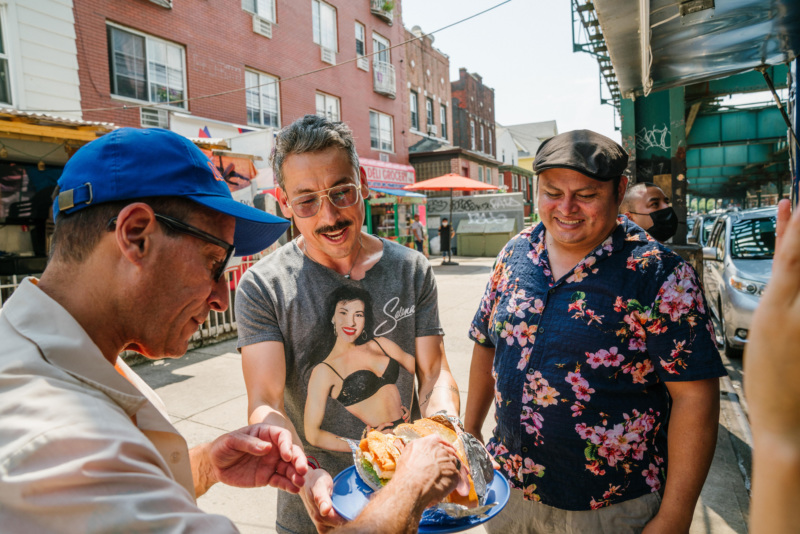
Stop 1: The Pumas Torta at Tortas Neza
The first spot on Alvarez’s list is a blue food truck where each of the 19 tortas on the menu are named after Mexican soccer teams. Fittingly dressed in a Pumas DHL soccer jersey (his favorite team), owner Galdino Molinero helms Tortas Neza with his wife, Lilia, where they pay tribute to the Mexican tradition of eating a torta while watching a game, but also to Molinero’s old working class Mexico City neighborhood, Nezahualcóyotl (or Neza), named after a famous Aztec poet-king.
We’re here for the signature Pumas torta, a beast that layers nearly every single ingredient available: chicken Milanese, ham, sausage, head cheese, and chorizo folded into eggs are but some of the components. As Molinero tops it off with a mountain of cheese, Alvarez hums Beethoven’s 5th symphony for fitting and dramatic effect.
“These are the kinds of tortas you’d find in that working part of the city, where they love quality but they love quantity,” Alvarez says. “That’s why he makes these gigantic.”
Alvarez and crew divide and conquer the sandwich among themselves. Everyone’s full — and this is only the first stop. 104-58 Roosevelt Avenue, Corona, Queens.


Stop 2: Corn Tortillas at Tortilleria La Guadalupana
We waddle to a tortilleria diagonally across from Tortas Neza that makes the freshest corn tortillas around. A couple sandwiched between a counter and a tortilla press conveyor belt are piling and wrapping stacks of the pillowy bread like clockwork, the smell of corn in the air.
“The basis of all Mexican cuisine,” Alvarez gestures, smiling. “We are the people of corn and this is our gift to the world: Nixtamalization.”
Alvarez is granted behind-the-scenes access to the nixtamalization machines, and proceeds to lead us through this arduous process. First, corn kennels are cooked and soaked in an alkaline solution for 24 hours, where the kernels become hominy. Hominy is then ground into a paste, becoming masa, which is then formed into balls that are pressed to become tortillas.
Sánchez catches a fresh one off the conveyor belt and hands it over. It’s piping hot. He shakes salt onto its surface and instructs us to thinly roll it up: the only way to eat a tortilla that fresh. Pro tip: If you get tortillas here, plan to eat them quickly! If you can’t, Alvarez says to tear the tortillas up and fry them in oil to make chips at home. 104-23 Roosevelt Avenue, Corona, Queens.




Stop 3: The Taco Árabe at Aquí en Bella Puebla
During a 15-minute walk to our next destination, Alvarez gives us a lesson in cursing: “You speak Spanish? We need to teach you some swear words! Let’s start with chingar,” he says, referring to a very common four-letter expletive. There’s also a lesson in immigration: “I’ll get off my soap box now,” he jokes after explaining how NAFTA tanked the Mexican corn industry, leading to mass migration to the U.S. Finally, we arrive at Aquí en Bella Puebla, a restaurant that is emblematic of the many Pueblan immigrants that settled here and nicknamed their new home “Puebla York.”
Mostly, we’re here for Señora Lupe’s excellent tacos árabes.
“It’s a beautiful immigrant story, of how immigration makes any food richer,” Alvarez smiles. The story goes that when Lebanese immigrants came to Puebla, Mexico in the 1930’s, they brought over the Levantine technique of slow cooking meat on a rotating vertical spit. A family set up shop and started selling this new kind of rotisserie-style lamb. A family next door was selling Arabic flour-based bread. The combination of the two became the taco árabe.
“It’s the grandfather of the taco al pastor,” says Alvarez, in which the al pastor pork replaced the taco árabe’s lamb, while the vertical spit has been adopted by taquerias far and wide.
Alvarez believes Señora Lupe’s tacos are even more special because of her secret barbecue sauce, which takes the marinated lamb to the next level. “She and her husband also own a pizza place [Sicilian’s Pizza & Tacos] that has the best tamales,” he adds. Only in New York. 94-11 Roosevelt Avenue, Jackson Heights, Queens.

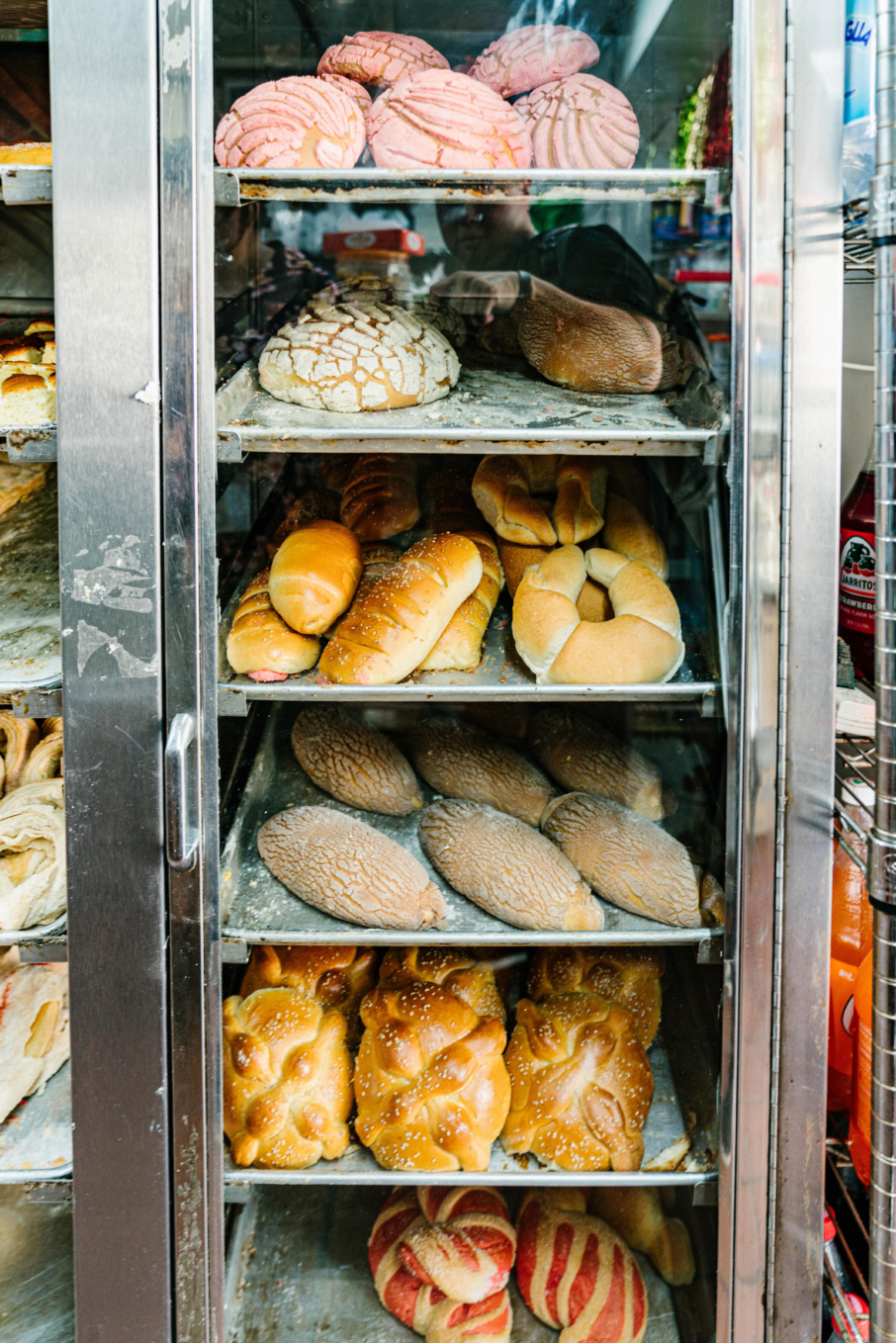
Stop 4: Pan Dulce at Vallecito Bakery
Next up is a Pueblan-owned bakery that offers a huge selection of pan dulce (literally “sweet bread” or pastries — a result of the Spanish introducing wheat to Mexico in the 16th century, and cemented by the French who invaded and brought along their baking skills in the 19th century) from all over the country. It’s also where Molinero from Tortas Neza gets his sandwich bread custom made.
Here to school us in “bread literacy” is Doña Jovita, who’s been working at Vallecito Bakery for nearly 20 years. She grabs a tray and a pair of tongs as she faces what can only be described as a huge bread cellar, showcasing more than 40 varieties of pan dulce with poetic names.
“Como se llaman?” she asks the flour-dusted bakers in the back every so often, holding up a pastry.
There are piedras (named because they look like stones), conches because they resemble shells, ojo de buey for their bull’s eye-like shape, and the pan de borrego (sheep bread), an empanada-like treat filled with arroz con leche.
“A Mexican pastry must be fully activated with coffee,” Alvarez instructs. Or with hot chocolate, which the Vallecito counter thankfully provides. He likes to get the pan de borrego, with its fluffy, light, and sugary crust and decadent arroz con leche filling.
“I had never had that one in my life until I moved to New York City. That one’s a Poblano one, it’s really special.” Otherwise, he says, go with a concha. 40-06 Benham Street, Elmhurst, Queens.
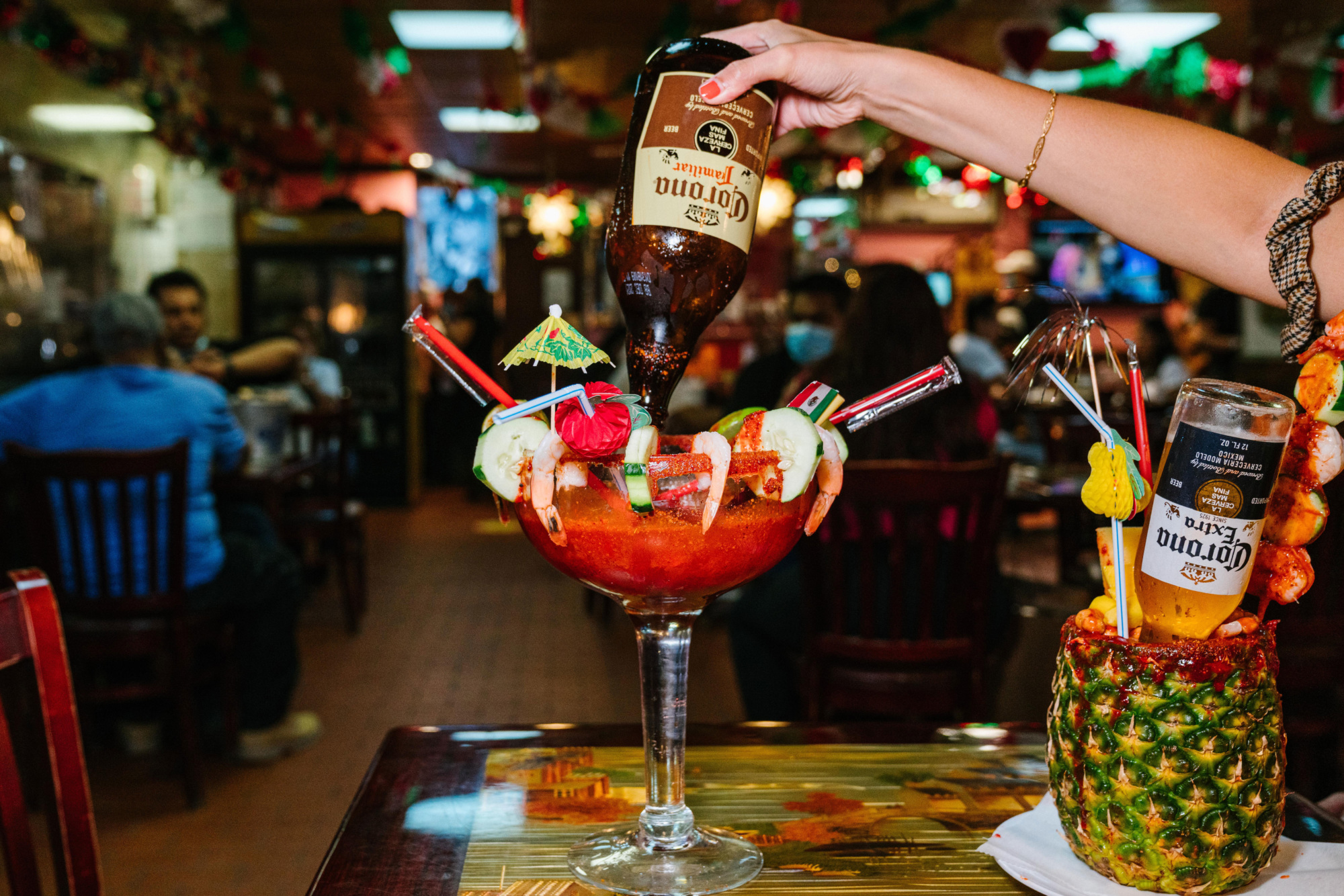

Stop 5: Micheladas at Michelada House II
“A million years ago, this was a Cuban Chinese restaurant called La Estrella,” DiStefano notes.
Now, Michelada House II is the sort of place where the eponymous drinks are the size of your head, sometimes even bigger. There are over 10 types of micheladas to order from, alongside Mexico City-style street food and antojitos (snacks). It’s exactly the sort of establishment you’d easily find in Mexico’s capital (the owner, Jose Luiz Diaz, is from Mexico City), or sometimes in Los Angeles, but not in New York.
Take the machete mixto, or what looks like a very long oval tostada that the menu specifies is 53 centimeters, or roughly 1.7 feet long. “It’s kind of in the vein of Tortas Neza: big and excessive,” says Alvarez. “In New York, we have to have big pizza slices; in Mexico City, they have to make gigantic tacos sometimes.”
He recommends also getting the tacos de canasta (basket tacos), or what some people argue are the original tacos that made their way from the countryside to the capital city at the turn of the last century.
“Usually, it was women who made these steamed tacos with beans on the inside in the morning,” Alvarez explains. “They would pile them up in a basket and cover them. They would continually steam, and you’d pull them out of the basket yourself.”
We order a round of drinks and when they arrive, their rims are adorned with tamarind, chili, and shrimp, while an extra large bottle of Corona tilted face down gurgles into the glass. This is not the sort of place you want to visit alone. 88-19 Roosevelt Avenue, Jackson Heights, Queens.
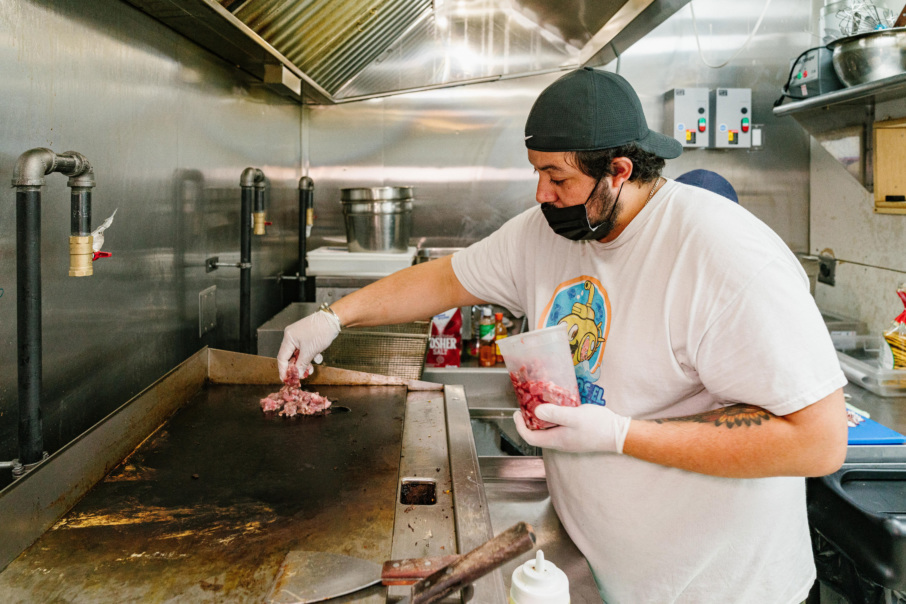

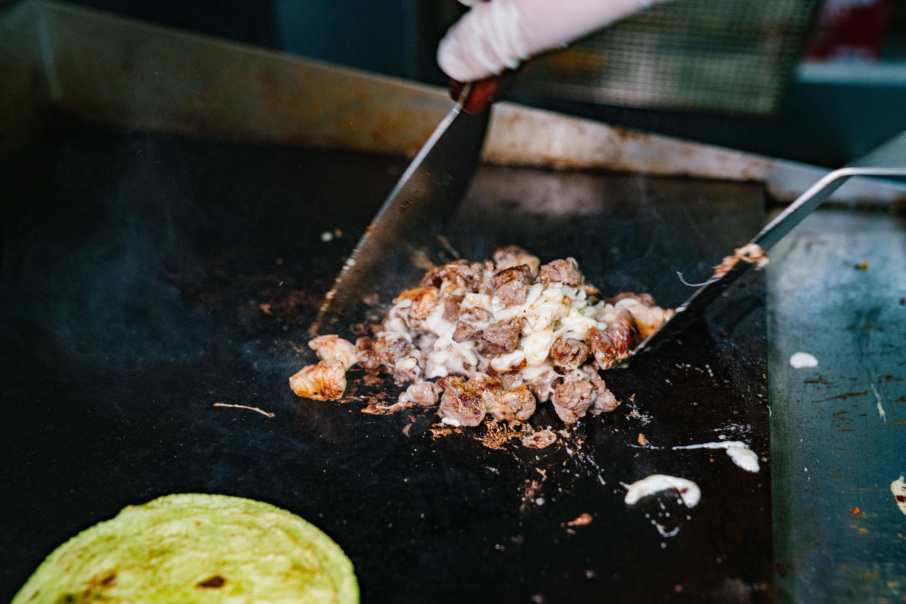

Stop 6: El Rey Taco at Mariscos El Submarino
“You were here yesterday!” the cashier exclaims as Alvarez approaches the counter of this newer spot. We’ve arrived at Mariscos El Submarino, which deals in a favorite food of Norteño, Sinaloa, and Baja California: seafood.
“Mariscos is relatively new for New York City, but popular all around the country,” Alvarez explains. We order the Chaparrita, a seafood tower in a soy sauce-accented aguachile pool of fish ceviche, octopus, and shrimp, and the El Rey taco, a surf-and-turf taco of steak and shrimp with melted cheese on a brilliantly green (sometimes deeply red) taco, which Alvarez promises is “one baaaaad motherf—. The most beautiful taco of deliciousness I’ve had the pleasure to have multiple times.” He’s not wrong. 88-05 Roosevelt Avenue, Jackson Heights, Queens.

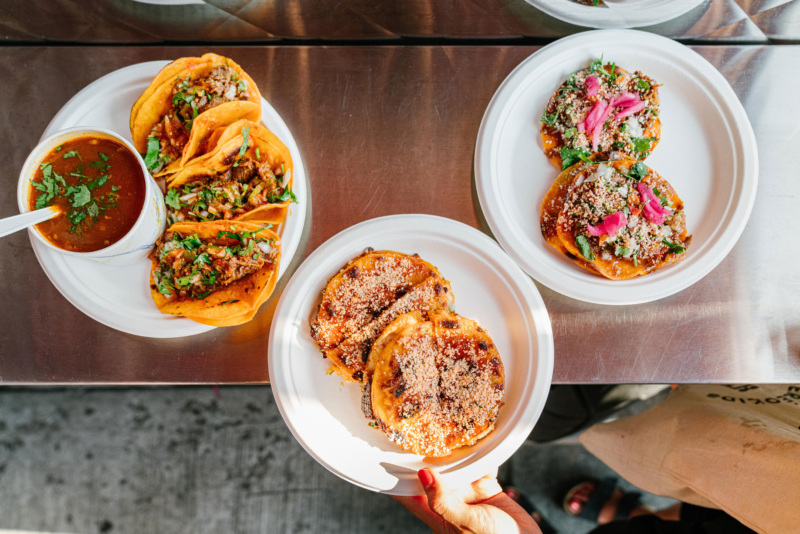
Stop 7: Everything at Birria-Landia
When we get to the first taco truck ever reviewed by the New York Times, people are already lined up a good 30 minutes before Birria-Landia even opens. That’s because the truck is New York’s OG temple to birria, where owner José Moreno (also from Puebla, and here to greet us) pays tribute to the melty beefy stew in the menu’s only four items: a beef taco, a mulita, a torta, and a cup of rich beef consommé.
“Birria is really famous, from the state of Jalisco,” says Alvarez. “It’s a kind of hearty, chili stew, made of guajillo peppers, typically made with goat, sometimes lamb, but the transformation here [at Birria-Landia] is with beef. This kind of style comes from Tijuana, Baja California. It caught on in LA, and then it went like wild fire all over the country. Now, you can find birria all over Roosevelt Avenue.”
The truck sells nearly 1,300 tacos every night, and the move, as anyone will tell you, is to dunk the taco (which gets its orangey-red color from being dipped in beef fat) into a cup of consommé.
Alvarez and Moreno talk shop — Birria-Landia just opened a second truck in Williamsburg and they plan to expand to the Bronx, are looking into brick-and-mortar spaces, and are thinking about adding vampiro and chicken tacos to the menu.
After the crew messily and ecstatically dunks and slurps away, Alvarez waves to the cashier, a former Birria-Landia regular-turned-employee, now attending to a monstruous line snaking down the avenue.
Note: Birria-Landia moved from their original location on 78th and Roosevelt to just down the block at 77th and Roosevelt, “because it messed with the bus stop,” says Moreno.


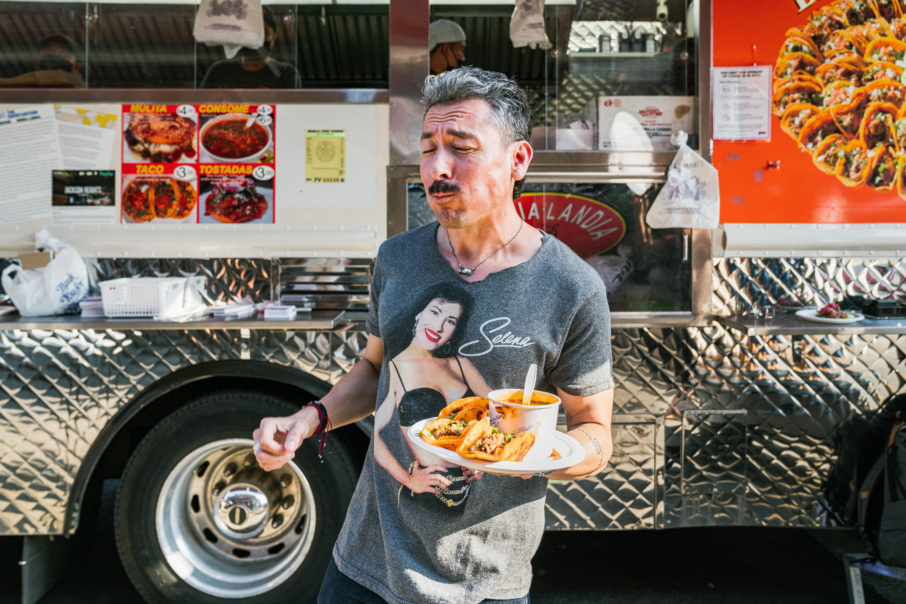

Stop 8: The Taco al Pastor at Taqueria Coatzingo
“I brought my friends!” Alvarez exclaims to Beatris Zapata by way of greeting.
Zapata is the daughter of the owners and a regular face at Taqueria Coatzingo, our final stop and a two-decades-old Pueblan landmark in Jackson Heights that’s right off the 74th Street stop for the 7 train, and located on the edge of Little India.
“To see a family from a little village called Coatzingo [in Puebla], and have their village name in big bold letters on the awning, it’s a sense of pride,” Alvarez says. “We made it and here we are for everyone to see where we’re from.”
We’re here for the taco al pastor (though their carne asada taco is also very good, Alvarez notes), in which the pork is sliced from a meat tower slowly roasting on a trompo, that Levantine-to-Puebla vertical spit.
“Look at it, oh my God, it’s like a tornado of love,” Alvarez sighs. Zapata throws in a camarón (shrimp) taco for us, also excellent. (Pro tip: If you know what’s good for you, always order your taco “con todo” — cilantro, onion, and anything else the taco is meant to be eaten with.)
Sadly, everyone is way too full to try their famous cemita sandwiches, which Alvarez recommends as well. This doesn’t prevent him from giving us one final Taco Literacy lesson about this unique bread made of flour and corn.
“There’s this really weird history in Mexico about racial dynamics: The more white you were, the more flour you ate, and the more Indigenous you were, the more corn you ate. The wealthier people had less corn in their diet, to be more European, ostensibly. But ultimately, you can’t eliminate corn. The cemita was a mestizo bread for a mestizo people.”
Next time, we all say. 76-05 Roosevelt Avenue, Jackson Heights, Queens.
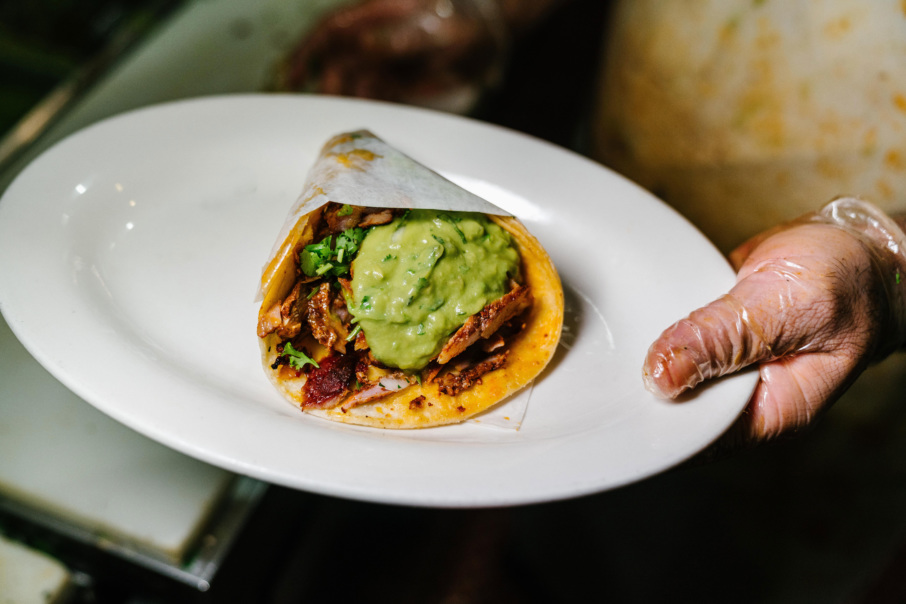
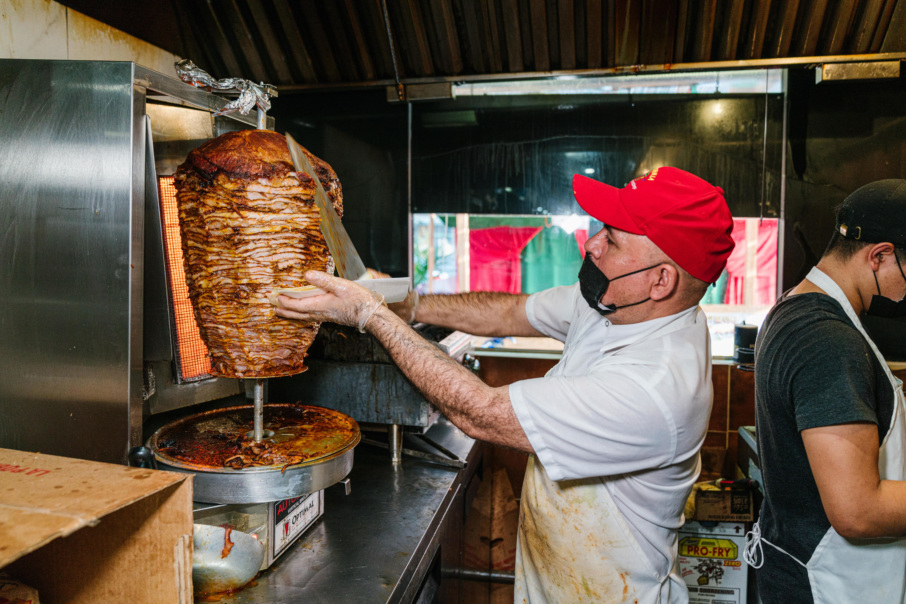


Resy Presents
The Community Series
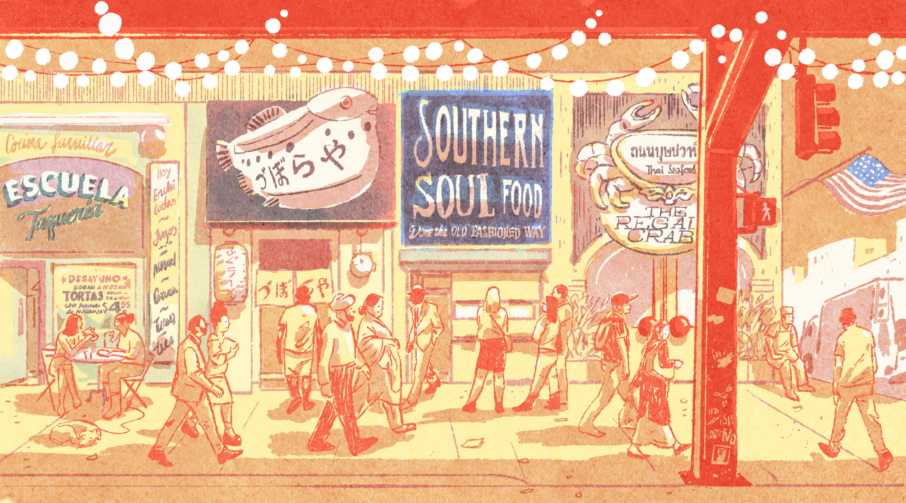
-
Because This Is What Community Looks Like
Welcome to Resy’s Community Series, a celebration of the people and places that make our communities special, told through their own voices and perspectives. -
‘We Are Still Here’: On Standing Up for San Francisco’s Black Community
Chef and San Francisco native Tiffany Carter on fighting to preserve African American culture, and her guide to eating your way through her hometown. -
A Chef’s Eating Guide to the Twin Cities’ Hmong Village
Follow Hmong American chef Yia Vang on a tour of his favorite stalls at Hmong Village, a sprawling indoor market and the epicenter of Hmong cultural life in the Twin Cities. -
A Local’s Guide to Eating Your Way Through Long Beach’s Incredible Cambodian Restaurants
Follow Cambodian American food content creator James Tir on a tour of his hometown favorites. -
The Ultimate Guide to Queens, According to Jessica Ramos
New York State Senator and Queens native Jessica Ramos has very serious food opinions. Here are some of her favorite places to eat in her beloved borough. -
The Making of the Pumas Torta at Tortas Neza
Watch Mexico City native Galdino Molinero assemble Tortas Neza food truck’s signature (and gargantuan) Pumas torta.
Discover More

Stephen Satterfield's Corner Table


